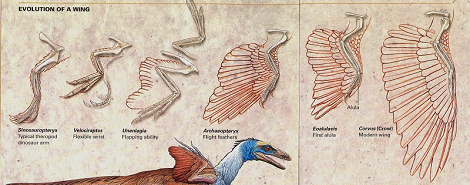
Well, I was browsing on Science Mag and came across the paper “Sustained miniaturization and anatomical innovation in the dinosaurian ancestors of birds “. It would seem that becoming smaller had become an evolutionary advantage over the larger Dinosaurs. However, I thought I would like to further address some tidbits on this subject giving we already know and have observed the length of wings of some birds evolve to suit different environments such as an Urban highway in contrast to open natural spaces in the wild. . It is apparent that birds can adapt to different environments rather quickly, and this may have played a key role in how some dinosaurs shrank and became what we know as our modern day birds. This may explain the very evolution of wings from the theropods, such adaptations according to the paper means that the smaller and more agile dinosaurs stood a better chance of surviving extinction, and thus giving rise to the diversity of birds we have today. Now giving this, and if you notice the study of embryology in modern birds, we have come to realize that this miniaturizing link can be seen in limbs that make up the modern bird’s wings and how they likely derive from the forearms of their theropod ancestors. There are very clear indicators and clues to be found in the anatomy, and this homology is unmistakably solid evidence for the evolution the modern avian and non-avian birds.
Among these clues mentioned in the video is seen in the fingers and separate arm bones in modern birds before they fuse together as they develop through their embryonic stages. Some birds still have their claws on their wings, examples include birds such as the Ostrich or Chauna torquata…:
OSTRICH:
Chauna torquata:
However, I think the most interesting is the Hoatzin. Take note in the following images of the Hoatzin embryo 3 fingered hand and claws vs wherein the adult the claws have been lost and the fingers have been fused. The fusion here is likely the very process in which was a stepping stone into the development of the modern bird’s wing. Thus as the Hoatzin hatches, it retains it’s 3 fingered hand and claws until it matures, and once a Hoatzin matures the claws fall off and the fingers fuse to become the skeletal structure of their wings:
Hoatzin Embryo vs Adult Sketch:
And here is a Video of a Hoatzin Chick:
This ought to look very familiar to anyone that has been paying attention to recent findings in the field of paleontology such as Archaeopteryx and the Micro-raptor:
Archaeopteryx:
The most intriguing thing about this is that you can see, regardless of bird species, the same basic skeletal structures in which correspond to almost all avian and non-avian birds. These include the structures of the wings to having that infamous wishbone. You can literally see this Homology here:
Figure 2:
Figure 3:
Ventral view of metacarpals and select wrist bones in palm of theropod hand. (a) Herrerasaurus ischigualastensis (after ref. 58); left metacarpals (reversed). (b) Coelophysis bauri (MCZ 4331); right metacarpals and compound distal carpal. (c) Allosaurus fragilis (YPM 4944); left metacarpals (reversed). (d) Deinonychus antirrhopus (YPM 5206); left metacarpals and YPM 5208, left semilunate carpal (reversed). (e) Archaeopteryx lithographica (Eichstätt specimen); left metacarpals and wrist bones. (f) Nothura maculosa (YPM-OST 2086); left carpometacarpus (reversed). I–V, metacarpals; C1–3, distal carpals; r, radiale; TC, trochlea carpalis.
In figure 2 above you have a Maniraptor(A) in comparison to Archeopteryx (B), and the modern Northura maculosa (C) to which are found in Brazil, Paraguay, Uruguay, and eastern and northern Argentina as pictured here:
 Now in Figure 3, this same modern bird’s wing structure (f) is in comparison of the metacarpals and select wrist bones in palms of theropod hands such as Allosaurus (C). The morphology can be clearly seen, giving us the homology of modern birds with their theropod ancestors. This is no fluke or some coincidental correlation as there is a great amount of Homology between birds and dinosaurs to ever consider them as such. I even bet you might be surprised to find out that this also includes us if you take the time to read the link below on what Homology is. This is astoundingly strong evidence for the evolution of Theropods to our feathered friends we often keep as beloved pets, and even our own evolution stemming back millions of years. So when a Creationist tells you that humans have lived with dinosaurs, you can agreeably nod your head as we have been living with them for quite some time! Furthermore, it’s also known that many species of birds such as your modern chicken all have developing tails with vertebra during their embryonic development to which get cut off by the hox gene and then reabsorbed. The following image is of a Chicken Embryo:
Now in Figure 3, this same modern bird’s wing structure (f) is in comparison of the metacarpals and select wrist bones in palms of theropod hands such as Allosaurus (C). The morphology can be clearly seen, giving us the homology of modern birds with their theropod ancestors. This is no fluke or some coincidental correlation as there is a great amount of Homology between birds and dinosaurs to ever consider them as such. I even bet you might be surprised to find out that this also includes us if you take the time to read the link below on what Homology is. This is astoundingly strong evidence for the evolution of Theropods to our feathered friends we often keep as beloved pets, and even our own evolution stemming back millions of years. So when a Creationist tells you that humans have lived with dinosaurs, you can agreeably nod your head as we have been living with them for quite some time! Furthermore, it’s also known that many species of birds such as your modern chicken all have developing tails with vertebra during their embryonic development to which get cut off by the hox gene and then reabsorbed. The following image is of a Chicken Embryo:
Strong is evolution with evidence…hmmmm? Help teach I do, and leave you further reading I will!:
- The origin and evolution of birds
- http://scientificillustration.tumblr.com/post/16685353512/got-any-ostrich-or-emu-wing-claws
- http://pterosaurheresies.wordpress.com/2011/08/21/the-pterosaur-pteroid-and-preaxial-carpal/
- http://ncse.com/evolution/science/what-is-homology
- http://evolution.berkeley.edu/evosite/evo101/IIC1Homologies.shtml
- http://www.pnas.org/content/96/9/5111.figures-only
So I hope you had enjoyed this educational post. Please share and spread the knowledge! 🙂
-TheJackel
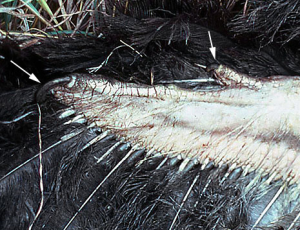
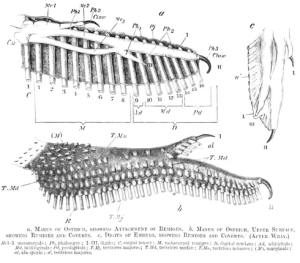
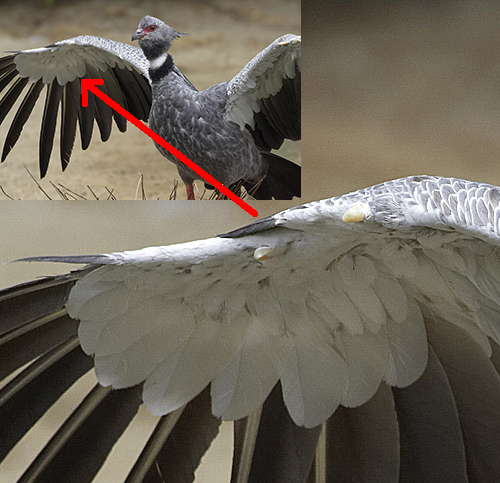
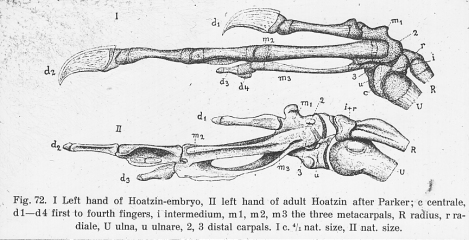
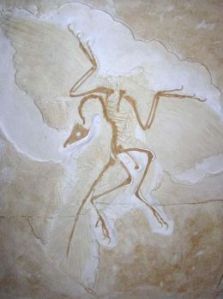
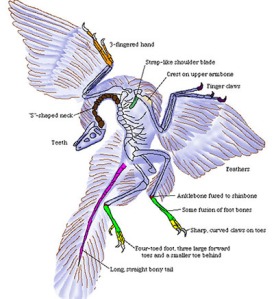
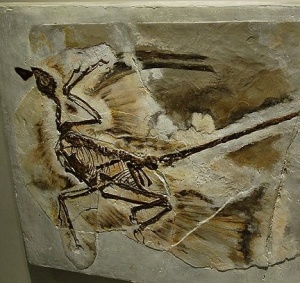
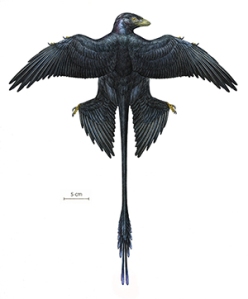



But velociraptor is not a dinosaur. Velociraptor did not evolve from a dinosaur.
LikeLike
Lol.. It is a dinosaur, sorry woeful denial of this is not an argrument worthy of consideration
LikeLike
Yes, all birds are modern-day dinosaurs, and thus did not become entirely extinct. I continue to see still today.
LikeLike
Mini Dinos that have now become a mammalian delicacy
🙂
LikeLike